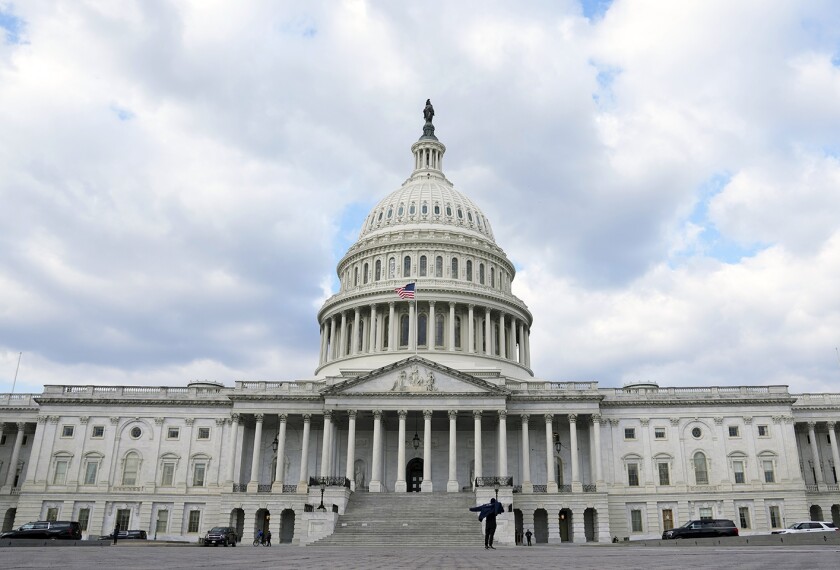The American Rescue Plan provides an additional $123 billion in federal funding to K-12 schools, much of which is to be used over the next two years. Because of this new funding and the remarkable resourcefulness educators have already shown during the pandemic, we are likely to see more innovation in schools over the next two years than we’ve seen in a generation. We cannot let this moment pass without organizing ourselves to learn which strategies prove most effective in helping students catch up.
School districts are busily designing strategies to help students make up for lost ground, such as intensive tutoring, after-school enrichment, summer school, extended days, vacation academies, and, yes, more hybrid instruction. (Stephen Sawchuk described three districts’ plans last month.) Precisely because so many of these approaches are new or untested on such a grand scale, state leaders have an obligation to students and educators to measure their effectiveness as they roll out. That means states must encourage school districts to share their plans with their peers and prepare their data systems to track the kinds of interventions each student is receiving. Over the next two years, states will be able to pool the data to compare students’ learning experiences under each type of intervention. States can then share that evidence back with districts so that districts can adjust their strategies. States have a chance to play a new role in education: as evidence-gatherers and accelerators, as clearinghouses and conveners—and not just accountability and compliance enforcers.
Many students, parents, and educators simply want school to “get back to normal.” After this difficult year, that’s understandable. But if districts try to return to business as usual, they will be condemning millions of students to being behind permanently. While some have had the technology and the support they have needed to continue learning during school building closures and the experience of remote learning, the vast majority of students, especially low-income children, have fallen further behind. Although students always arrive at school with varying levels of mastery of the prior year’s content, the disparities this fall will be more glaring than in years past. Schools will need to find new ways to differentiate and personalize instruction. Vaccinations or not, in-person school or not, it’s not going to be a normal school year. Again.
Under the interim federal regulations released last week, districts will be required to share their plans with parents and other local stakeholders. But states have an opportunity to do more than that, to cross-fertilize district planning efforts by making it easy for other districts to see their peers’ plans by posting them all on a common platform.
The federal regulations also require districts to spend at least 20 percent of their grants on programs to help students catch up, such as summer enrichment, extended day, comprehensive after-school programs, or extended school year programs. However, unless districts prepare to flag which programs an individual student has been assigned and how often he or she attends, it will be impossible to sort out later which types of supports made the biggest difference.
We cannot let this moment pass without organizing ourselves to learn which strategies prove most effective in helping students catch up.
If states are going to help districts learn about the efficacy of different catch-up strategies (such as comprehensive after-school programs, school vacation academies, or tutoring programs) and do so in time to inform district decisions next year, they will also need districts to upload student data throughout next year in order to compare student progress under different intervention types. This is not another accountability exercise. We’re not talking about school report cards for COVID-19 recovery. Rather, it’s an opportunity to inform district decisionmakers about the interventions that are helping students the most. As they adjust their plans next spring, district leaders will want to know if the strategies they’ve chosen are the best ones available to their students.
Unfortunately, many state education agencies lack the technical capacity to play the role of evidence-gatherer. In addition to seeking analytic help from local university partners or research organizations, states could look to the federal Institute of Education Sciences for support with survey tools or data-collection plans and evaluation designs. A little-known provision of the American Rescue Plan gives $100 million to the IES to “carry out research related to addressing learning loss.” This would be a good use of those dollars.
As usual in a crisis, leaders are eager to act. They will say the time to ask questions is later. But, despite the popular catchphrase, humans don’t “learn by doing.” We learn by comparing. We try a task one way and, if we fail, we try another until we find an approach that works.
In the wake of this pandemic, we don’t have time for each district to find its own way by trying solutions sequentially. We must prepare to learn in parallel. States are in the unique position to see the full range of district efforts and compare the progress being made by students receiving different supports. It’s the only way that local leaders are going to get the information they need to ensure every student catches up.
We should use the next two years not just to recover from the pandemic but as a chance to identify better ways to help any student catch up when they fall off-track. Whether it be an extended day, an extended year, summer programming, or tutors, we can build those strategies into a new model of the American school in which no student is allowed to remain behind.





